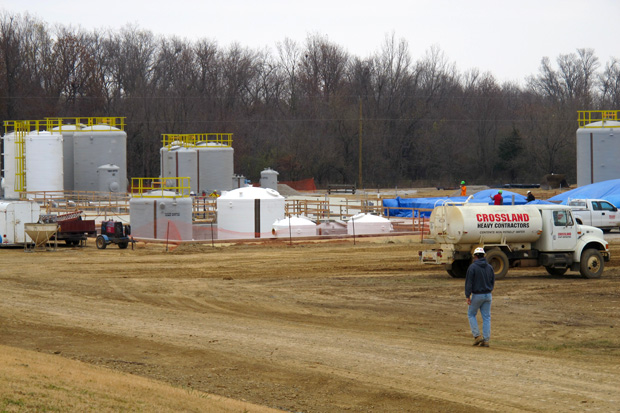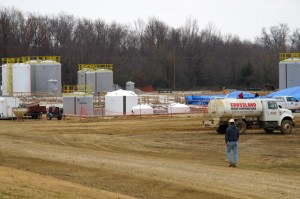
Construction at the site of Broken Arrow's new water treatment plant in December 2012.
Logan Layden / StateImpact Oklahoma


Construction at the site of Broken Arrow's new water treatment plant in December 2012.
Logan Layden / StateImpact Oklahoma

Logan Layden / StateImpact Oklahoma
Construction at the site of Broken Arrow's new water treatment plant in December 2012.
Every four years, the U.S. Environmental Protection Agency releases an analysis of how much federal money states will need to complete water projects to provide clean drinking water over the next 20 years.
The most recent update of the EPA’s Drinking Water Infrastructure Needs Survey and Assessment was just released, and the national need is staggering:
The nation’s drinking water utilities need $384.2 billion in infrastructure investments over the next 20 years for thousands of miles of pipe, as well as thousands of treatment plants, storage tanks, and other key assets to ensure the public health, security, and economic well-being of our cities, towns, and communities.
Oklahoma needs about $6.5 billion in federal funding, similar to most surrounding states, except Texas, whose size and population contributes to it’s nearly $44 billion need.
And that’s just in federal contributions to the Drinking Water State Revolving Fund program. State’s often use that money as leverage to secure the billions more necessary for actual construction on projects.
Although the least visible component of a public water system, the buried pipes of a transmission and distribution network generally account for most of a system’s capital value. Even small rural systems may have several hundred miles of pipe.
The EPA says the three most recent assessments clearly show the nation’s water infrastructure is in a “rehabilitation and replacement era,” with much of it at or approaching the end of its usefulness.
The Oklahoma Water Resources Board’s Joe Freeman says the $6.5 billion reported need for Oklahoma does not include projects that aren’t eligible for DWSRF money, and the assessment has historically been conservative.